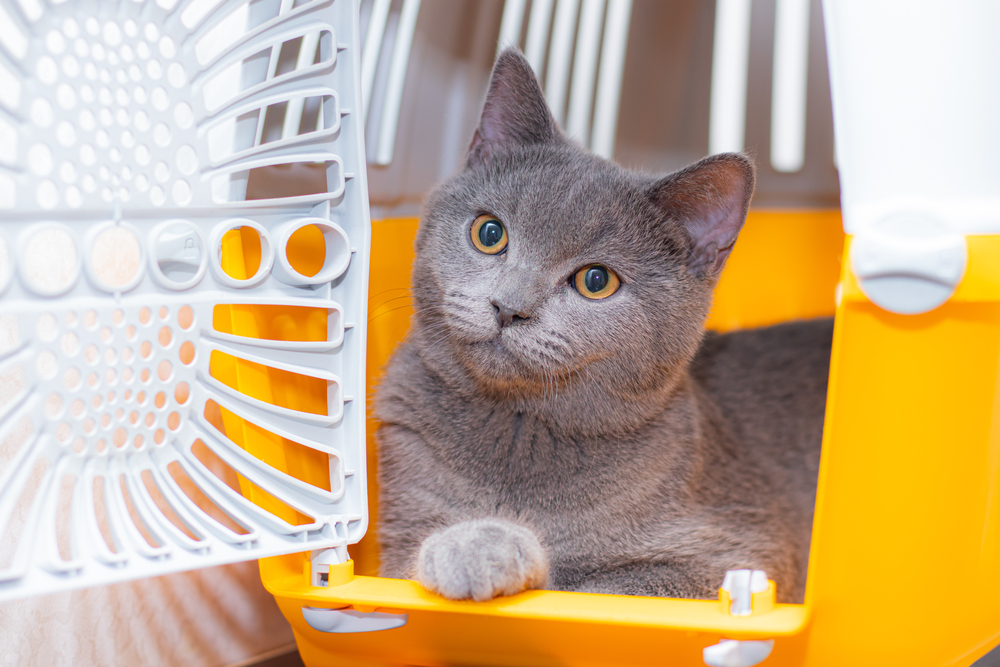Because cats are independent and stoic, and experts at hiding illness, many owners do not believe their feline housemate needs routine veterinary check-ups, or recognize that they are ill. Other owners may dread coercing their angry, hissing kitty into their carrier for a veterinary visit. However, cats do need routine care as much as dogs. Following are some reasons why you should schedule routine veterinary visits for your feline friend and the benefits of these visits, along with tips that will help with stress-free trips to our Groves Veterinary Clinic.
Why cats need routine wellness care
Here are six ways your cat will benefit from regular wellness checks.
- Weight management — More than 60% of U.S. house cats are overweight and—not surprisingly—veterinarians are diagnosing diabetes and heart disease more frequently. Routine veterinary visits keep track of your cat’s actual weight and body condition, and weight gain can be slowed before it becomes a problem. Your veterinarian can recommend a diet and exercise plan to help your cat maintain their ideal weight and improve their general well-being.
- Dental health — Bad breath can signal significant oral disease and lead to bacterial spread into the bloodstream that can cause life-threatening infection to body organs, particularly the heart. By identifying and treating dental disease early, your veterinarian can avert this health risk, and increase your cat’s comfort—and yours, because no one appreciates stinky cat breath when it’s snuggle time!
- Kidney and urinary tract health — Renal disease is common, especially in older cats, but early diagnosis can help slow disease progression. Dietary changes and medications such as antihypertensives can be prescribed to support kidney function as soon as problems are identified, and provide your cat with a chance to live longer, despite their kidney disease. Routine urine testing at your cat’s exam also allows early identification of other serious feline issues, such as bladder or kidney stones, or urinary glucose associated with diabetes. Other findings, such as abnormal red or white blood cell counts, could indicate a bladder or kidney infection. The sooner these problems are recognized, the sooner they can be treated.
- Thyroid health — Older cats also are prone to hyperthyroidism, a condition in which increased thyroid hormone production greatly accelerates metabolism. These pets may eat ravenously, suffer intense thirst, lose weight, and vocalize excessively throughout the night. Without treatment, their hearts will enlarge, leading to weakness and death. Our veterinarian will perform a simple blood test to identify hyperthyroidism at your pet’s exam. If found early, treatment options are available.
- Parasite prevention — Fleas, ticks, and mosquitoes can get into any home, meaning that indoor cats also benefit from parasite prevention. For a cat with flea-bite allergies, a single bite can lead to days or weeks of misery, pain, and itchiness. Mosquitoes can transmit heartworms to your pet and potentially cause heartworm disease, which cannot be cured in cats. Your cat’s exam will include testing for parasites, and recommendations for safe medications that will protect your cat and your home. Cats metabolize drugs differently than dogs, and you cannot give canine parasite preventives to cats.
- Behavior modification — Is your cat eliminating outside the litterbox? Acting aggressively toward a human family member they previously liked? Yowling excessively, or overgrooming? When cats misbehave, the problem may be medical or behavioral, and a veterinary visit can help confirm the cause and recommend the best solution.
Transporting your cat for their veterinary visit

Before taking your cat for their routine wellness check, you need to reduce their transportation-related stress with the following steps:
- A good fit — Ensure your carrier fits your cat. They should be able to turn around, sit up without their ears touching the top, and lie on their side and stretch out. The carrier should be sturdy, with a door that opens and closes easily, and a handle that allows easy lifting.
- A good experience — If possible, carrier-train your cat before their veterinary visit. Remove the carrier door, or prop it open so it will not close accidentally. Put a soft towel, an old sweatshirt, or a favorite blanket inside, and set the carrier on a chair or table. Let your cat discover the carrier themselves—never force them inside. Make the carrier more tempting with treats and favorite toys, to teach your cat their carrier is a sanctuary, not the precursor to something scary. Once your cat is calm inside the carrier, start closing the carrier door for short periods, and then longer ones. Eventually, walk around your living room carrying the carrier with your kitty inside, and then take them for short car rides. Always reward your cat with praise and tasty treats.
- Good medicine — If your cat simply refuses to accept the carrier, ask our veterinary team about a pre-visit medication that can decrease travel-related anxiety in cats.
At Groves Veterinary Clinic, we look forward to helping your favorite feline enjoy lifelong good health. Schedule an appointment to start them on their regular wellness visits with us, and never hesitate to ask questions if you have any concerns about your beloved cat.







